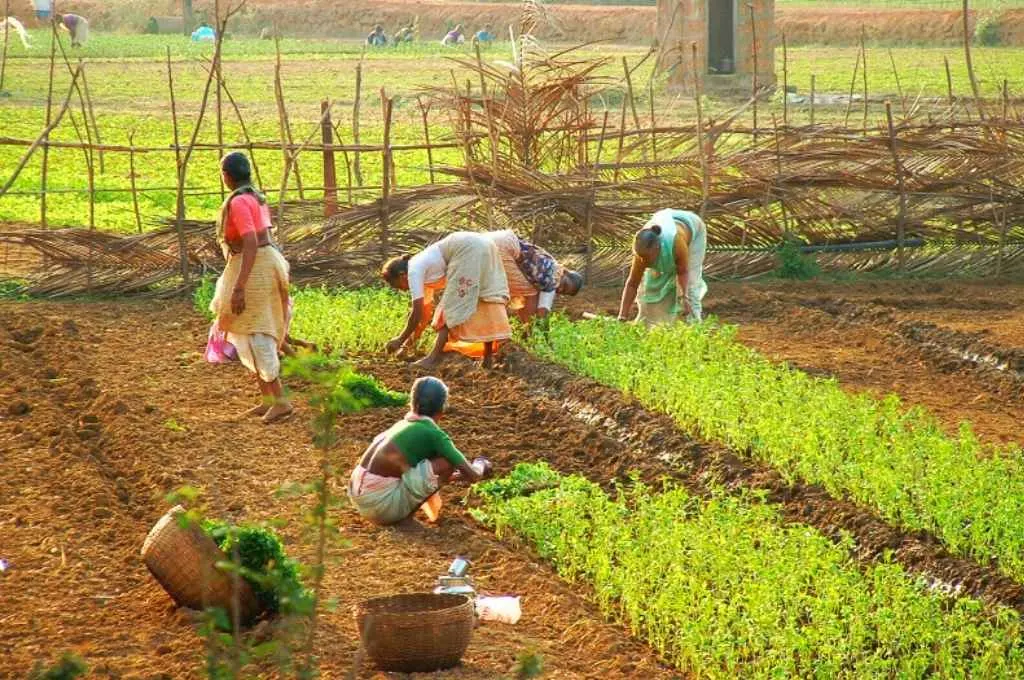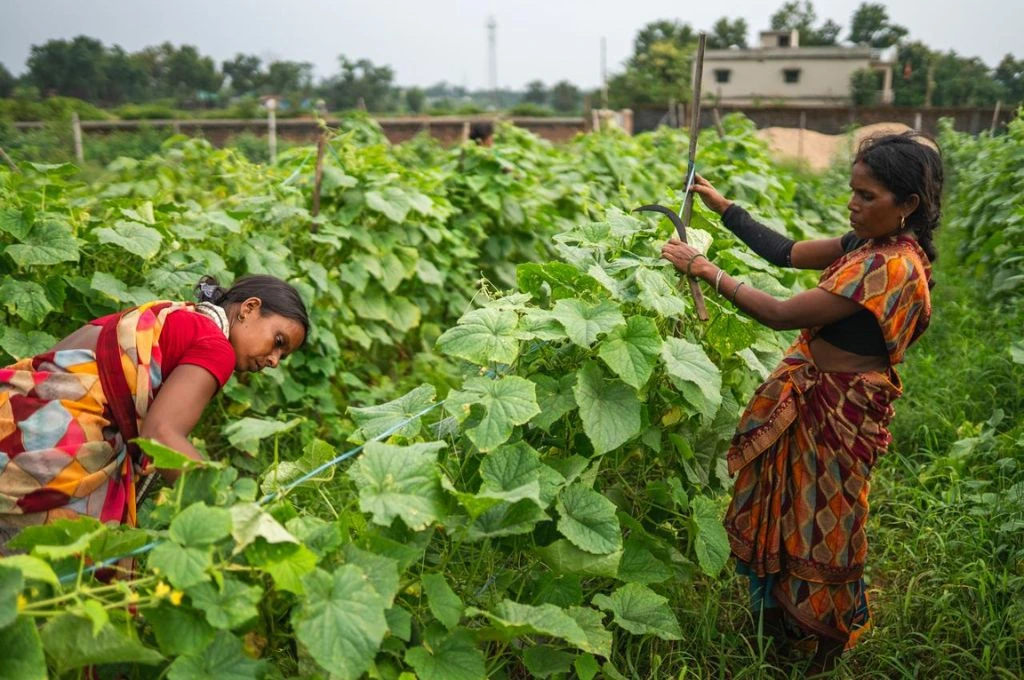India is the largest producer of millet as of 2021, with a total share of 41%, followed by Niger (~12%) and China (~8%). India also ranks 12th among those countries that produce high yields of millet. Millets have been an integral part of our diet for centuries. They offer a plethora of health benefits and are also good for the environment with low water & input requirements for production.
With the aim to create awareness and increase production & consumption of millets, the United Nations, at the behest of the Government of India, declared 2023 as the ‘International Year of the Millet’.
This month on IDI’s data dialogue, we’re exploring India’s trends in major millets, their area, production & yield, along with comparisons to rice and wheat.

Nutrient composition of Millets
Millets are cereals, similar to rice and wheat, but are more nutritious in terms of proteins, minerals and vitamins. India’s major millets include Sorghum, Pearl millet, and Finger millet, which are more commonly known as Jowar, Bajra, and Ragi, respectively.
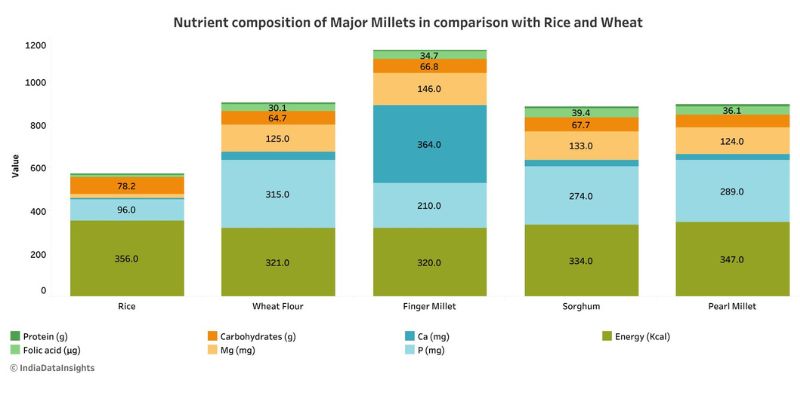
They are a natural source of iron, zinc, calcium and other nutrients. And have higher content of folic acid, calcium, iron, potassium, magnesium, and zinc than rice and wheat. Finger millet being the richest source of calcium (300- 370 mg/100 g).
Trends of Millet Farming in India (since 1966)
The estimated millet yield in India has more than doubled since 1966. India’s average yield in Millet farming (2021-22) is 1208 kgs per hectare.
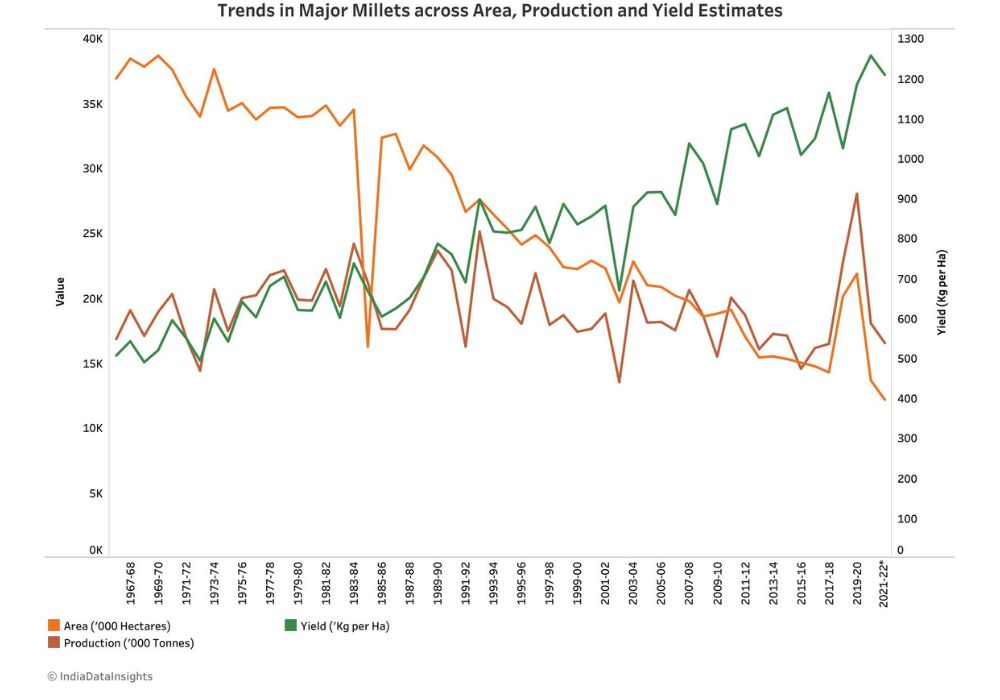
The production of millets has also increased by 7% (1966-2022) despite the area for millet cultivation in India decreasing consistently since 1971-72. A major drop in the area for millet cultivation occurred between 2006-2016.
The consistent improvement in yield estimates over the years indicates the adoption of better farming practices in India in the past few decades.

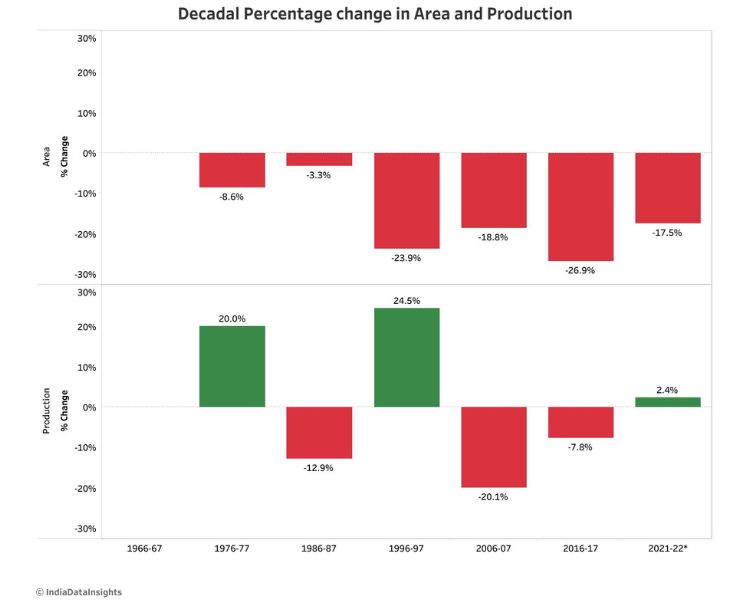
Although India is the largest producer of millet it has not shown significant improvements in the last two decades. Since 1966, we have seen an erratic trend in millet production.
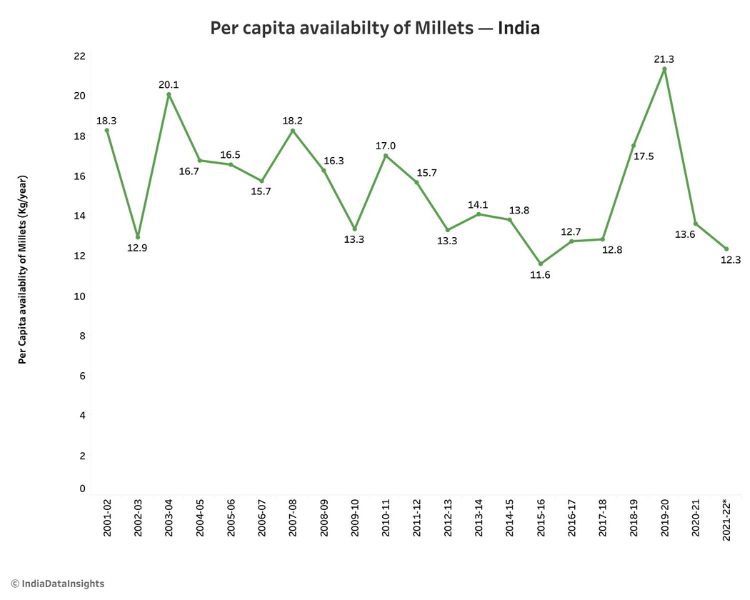
Per capita availability of millets has also been fluctuating over the years. It is at its lowest since the all-time high seen in 2019.
In 2021, approximately 12.3 kgs of millet was available per person.
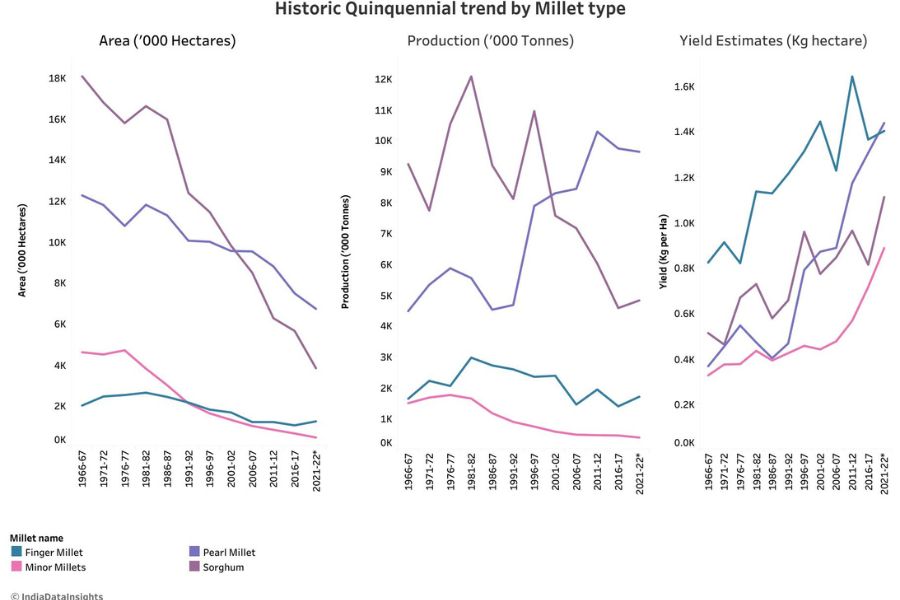
Trends across millets show that area for Sorghum has decreased drastically by 76% (1966-2021). On the other hand, production for Pearl millets has been emphasised the most – with an increase of more than ~6 million tonnes.
The yield estimates for all types of millet have shown steady progress and increased by 600-1000 kg/hectare.
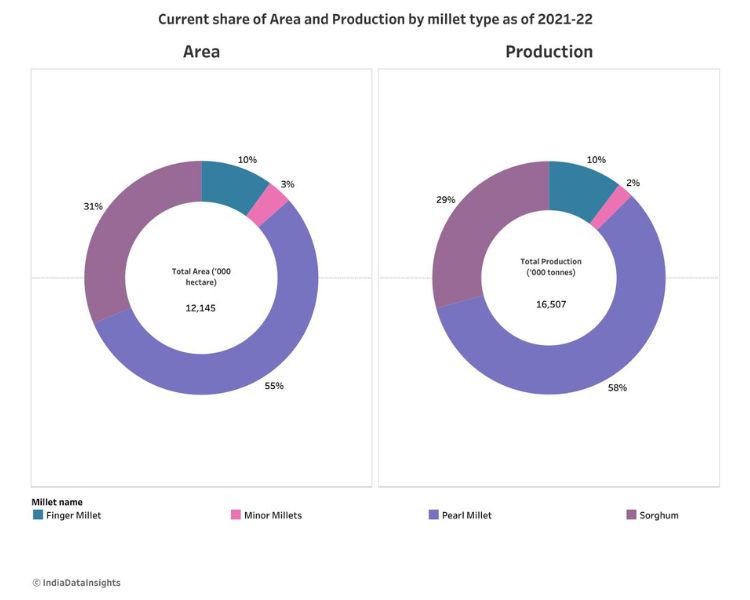
In 2021-22, Pearl millet contributed 58% to the total millet production, followed by Sorghum (~29%) and Finger millet (~10%).
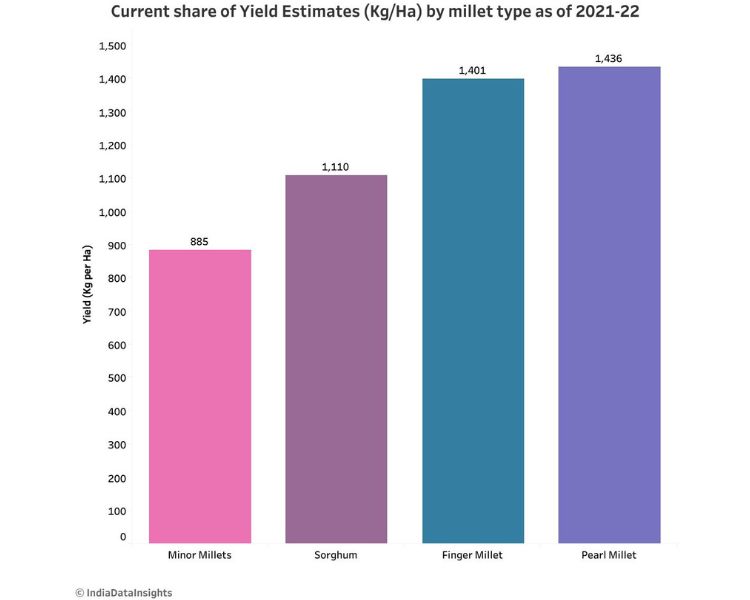
In spite of the fact that Finger millet has a lower share of area and production, its yield estimates are on par with that of Pearl millet. Their yield estimates as of 2021-22 was nearly the same – 1436 and 1401 kg/ha, respectively.
State wise distribution of Millets
Millet cultivation and production is found to be higher in the western part of India.
In 2021-22, Rajasthan contributed to ~36% (~4300K hectares) of the total area for millet cultivation in India.
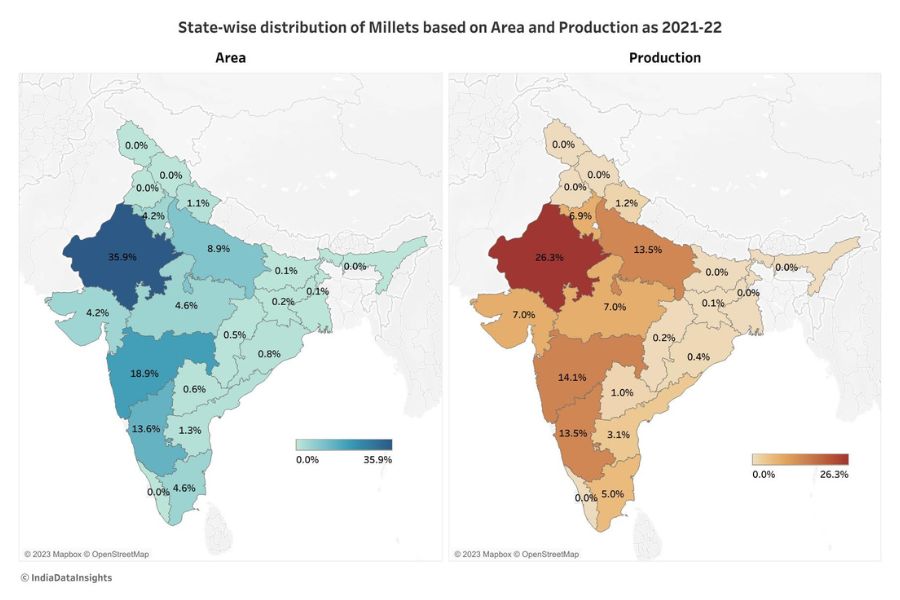
It is also the largest producer of millet in India. ~26% (more than 4000K tonnes) of Indian millet production is from Rajasthan. Although Rajasthan has the largest area and production of millet cultivation, its yield is on the lower side.
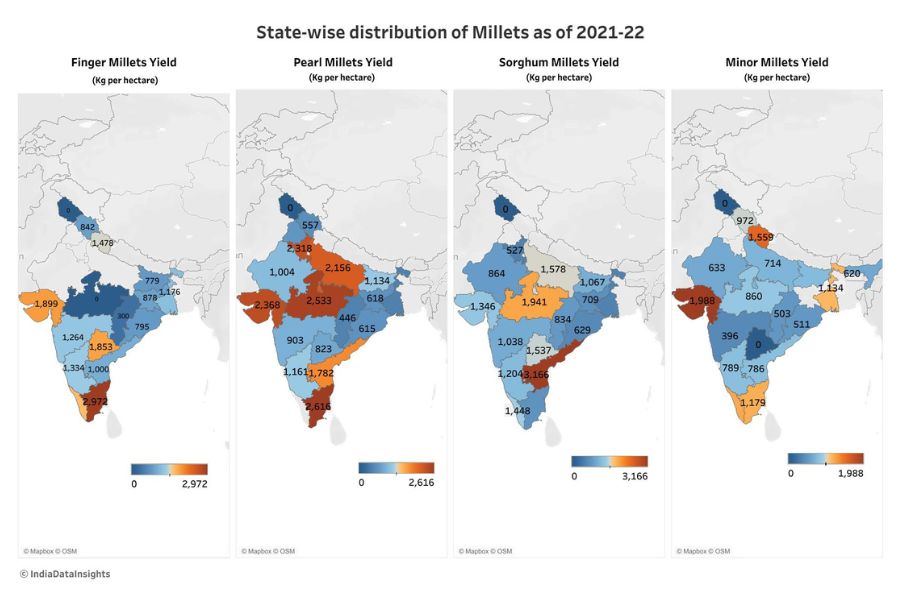
State-wise Average cost of cultivation of Major millets
The total cost of cultivation in most states is higher than the gross returns.
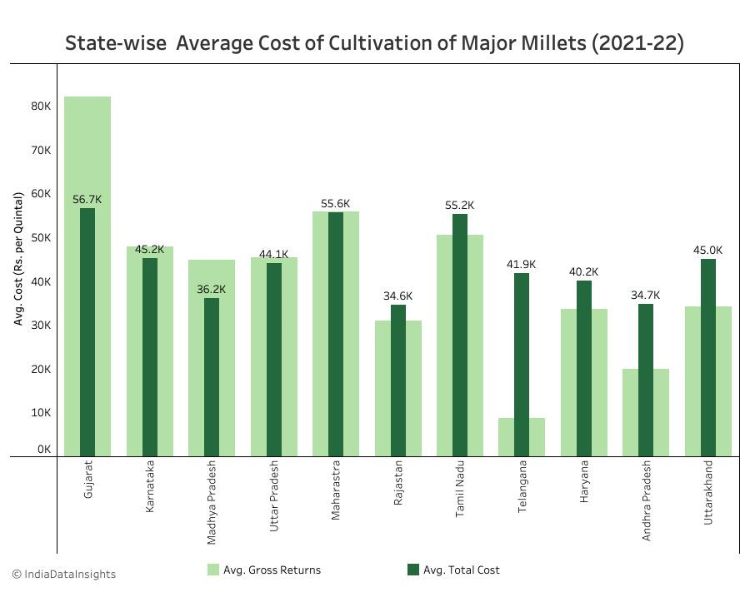
In 2021-22, most states barring Gujarat and Madhya Pradesh, incurred losses cultivating millets.
Comparison with Rice and Wheat
The trend of area and production (1968-2022) shows a growing gap between millet and popular staple foods- rice and wheat.
There has been a decline in the area for millet cultivation since 1968. While area for rice and wheat cultivation increased marginally, there has been significant increase in production and yield of rice and wheat. During the same period, millet production also varied slightly, with Pearl millet taking the lead.
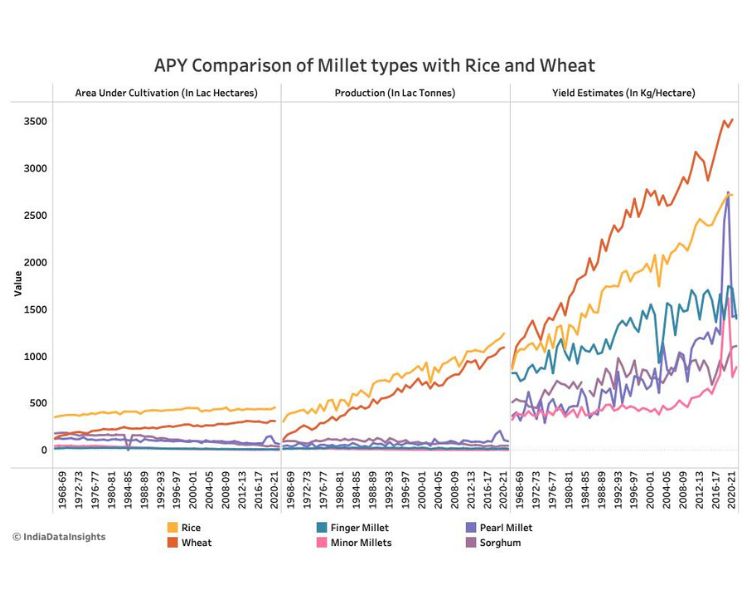
However, there has been a major boost in millet yield. It has the potential to be on par with the yield estimates for rice and wheat.
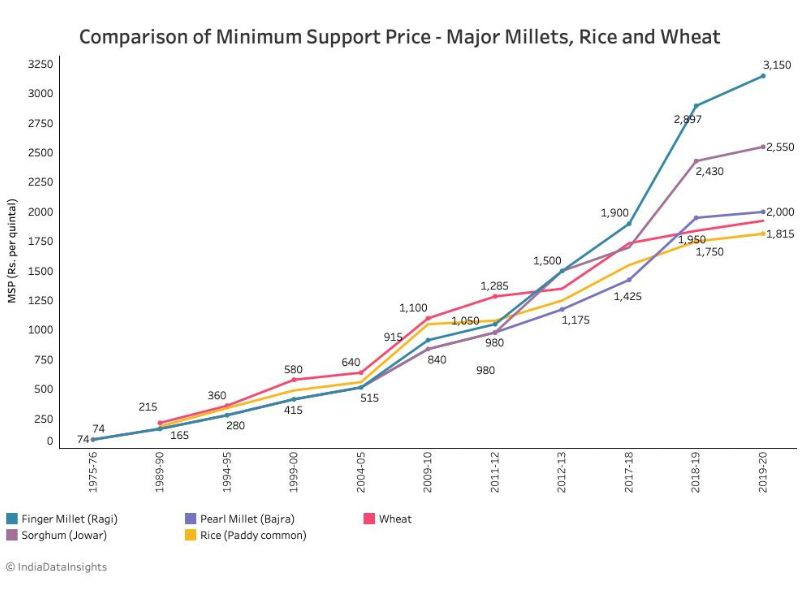
While the Minimum Support Price for rice, wheat, and major millets has significantly increased over the years, the highest hike has been for Finger millets. It increased by 3076 Rs per quintal – more than 4000% hike since 1975! This is a promising sign and can provide more incentives to farmers for millet cultivation.
Minimum Support Price is the price set by the government to purchase crops from the farmers, whatever may be the market price for the crops.
The Indian government has also been promoting millet production as part of its National Food Security Mission. To commemorate the ’International Year of the Millet’, the Government of India has held various interactive activities around Millets. As a result of these factors, millet production in India is expected to continue to grow in the coming years.
With the appropriate promotion of millets for their health benefits and benefits as a sustainable crop to cultivate, it can widely increase the consumption of millets. This will further contribute to improving nutrition, food security, and the welfare of farmers.
For more details, refer to the Millets in India report.
This article was originally published by India Data Insights.



